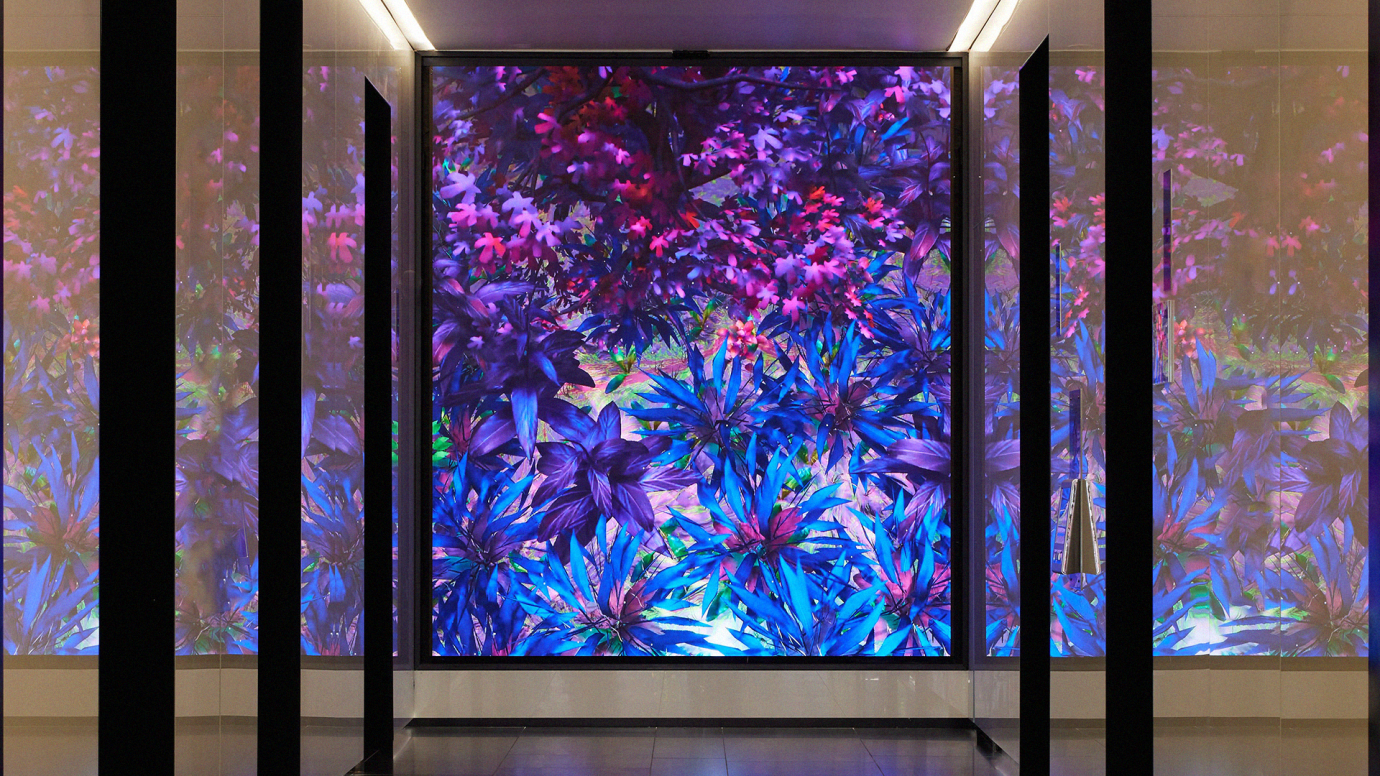Tag Archives: art
Void Vaporwave is a series of ultra-high-resolution digital artworks generated with our custom generative software based on the void series. It is a microgenre of electronic music and an Internet image that developed in the mid-2010s. The style is characterized by its allotment of the 1980s and 1990s state of mind music styles, for example, smooth jazz, lift music, R&B, and parlor music, regularly examining or controlling tracks by means of slashed and screwed strategies and different impacts. Its encompassing subculture is here and there related with an uncertain or humorous interpretation of customer free enterprise and popular culture, and will, in general, be described by a nostalgic or surrealist commitment with the well-known diversion, innovation and publicizing of earlier decades. It additionally joins early Internet symbolism, late 1990s website architecture, glitch craftsmanship, anime, 3D-rendered articles, and cyberpunk tropes in its spread fine art and music recordings.
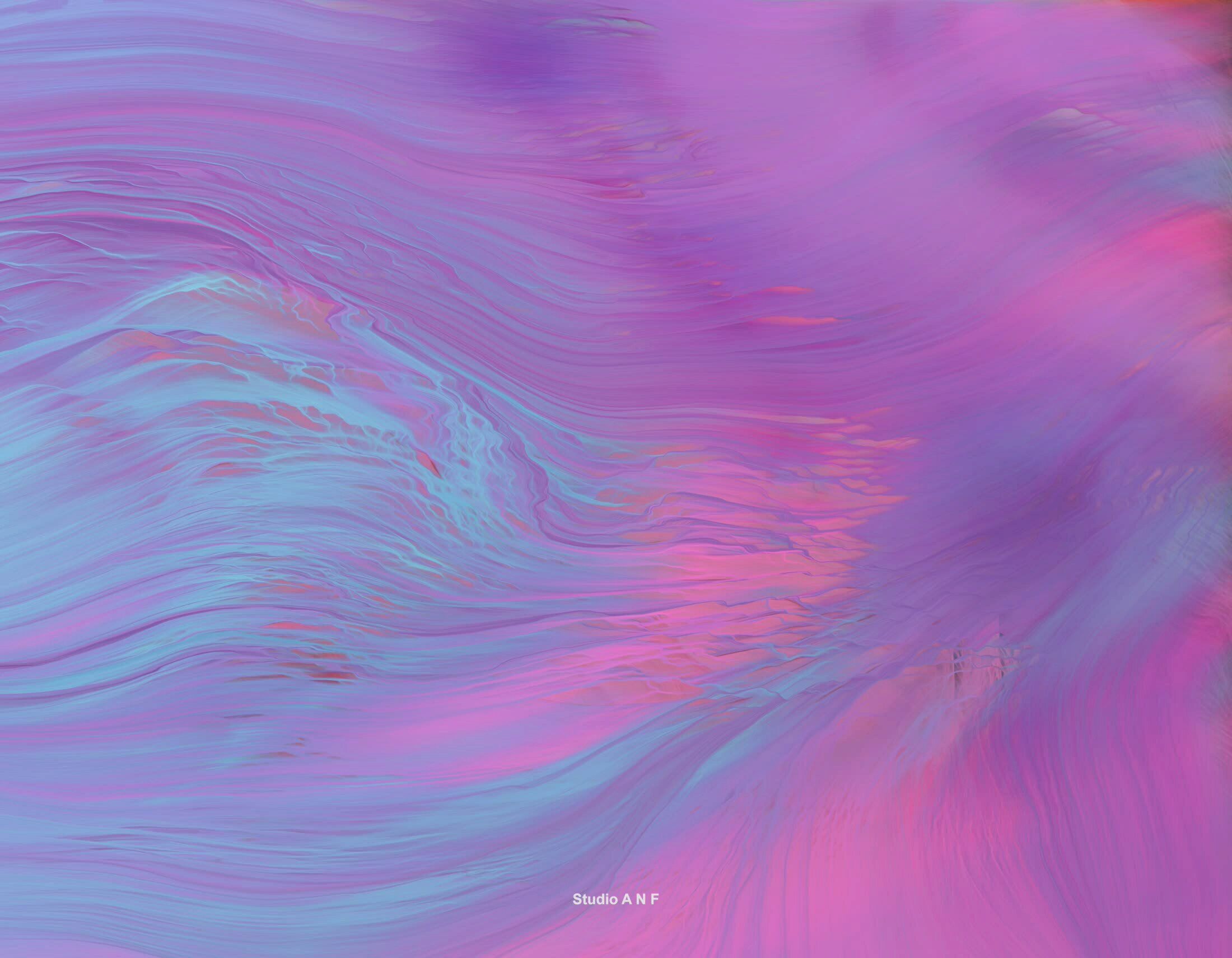



More Projects
An animated short film about artificial intelligence as psychotherapist and life coach.
Sound design by the talented Mister Kamp
AI voice by Jim D Johnston
Text [below] by Sascha Pohflepp
Many developments in the history of everything have started out as a mimesis of one kind or another. The arm became the lever while the horse became the steam engine and the mind became the computing machine. At some moment then typically comes a sort of inflection point at which the mimic surpasses its model: suddenly, there were hundreds of horses in the space of one. Often, this leads to other effects, ones much less obvious, unintended and almost impossible to foresee. Those horses, history tells us, facilitated a fundamental change in the urban landscape of North America; a change that came with a universe of social, ecological and economic transformations, not all of them for the better.
Cognitive technologies are likely to follow a similar pattern, although their mode of mimicry is much less linear. Consequently, inflection points may differ: instead of being an analog of our own thinking apparatus, they started off as apparatuses of logic. Running mechanically at first, such as the Antikythera mechanism, Charles Babbage’s difference engine or Gottfried Wilhelm Leibniz’s stepped reckoner, those machines could perform as many simple calculations as mechanical resistance (the arm) would allow for. The rise of electrical power and the vast paradigm shift it initiated then changed the mode of resistance into one of scale and integration: logical formations, materialized into ever-shrinking circuits, now powered by an invisible force at the speed of light. A sense of inflection followed: what if our souls fundamentally work the same way? But it turned out to be a mirage: our brains are not digital computers, just as little as the steam engine is a horse.
After more decades of trying to construct an apparatus that can think, we may be finally witnessing the fruits of those efforts: machines that know. That is to say, not only machines that can measure and look up information, but ones that seem to have a qualitative understanding of the world. A neural network trained on faces does not only know what a human face looks like, it has a sense of what a face is. Although the algorithms that produce such para-neuronal formations are relatively simple, we do not fully understand how they work. A variety of research labs have also been successfully training such nets on functional magnetic resonance imaging (fMRI) scans of living brains, enabling them to effectively extract images, concepts, thoughts from a person’s mind. This is where the inflection likely happens, as a double one: a technology whose workings are not well understood, qualitatively analyzing an equally unclear natural formation with a degree of success.
Andreas N. Fischer’s work Computer Visions II seems to be waiting just beyond this cusp, where two kinds of knowing beings meet in a psychotherapeutic session of sorts, consistent with the ideas that Joseph Weizenbaum first raised half a century ago with his software ELIZA. Yet, in Fischer’s interpretation, this relationship presents itself as a peculiar clash of surreal images and a voice tending to the very human. It is perhaps no coincidence then, that some of the images, particularly the carcass of an animal, are reminiscent of Werner Herzog’s 1971 film Fata Morgana, which depicts the Sahara and Sahel deserts to the sound of Lotte Eisner’s voice reciting the Mayan creation myth.
Like Herzog, Fischer created the images first and the voice-over followed after, almost in an effort to decode them and with them offer an experimental analysis of a future to come. Herzog’s film, after all, was initially intended as a science fiction narrative and only later turned into an exegesis of the origin of the world. In both films, the images serve as surreal divining rods to explore the nature of dreams and visions. “What kind of life is it?†asks the therapist. We do not hear the answer, but perhaps we have not heard the question right either: in a time of talk, simultaneously, of both the Anthropocene and the possibility of a posthuman condition, should the question not rather be what the dreams are, at their base of bases? And would it not be only fitting if—after passing the epochal inflection point of a machine that truly knows—its first words would be: “hi there, do you want me play back some of your dreams for you?â€
Sascha Pohflepp, September 2017













More Projects










More Projects
Single Channel Video; 4k UHD 3840 x 2160; 4:00; 30fps



More Projects
Schwarm 2k14 I
Schwarm 2k14 II
Schwarm 2k14 III
More Projects
Second Nature is a series of video loops which show an alternate reality layered on top of our own. During a return to the Alps in the south of Munich where I grew up, I took walks in the forest, filming them from my own point of view and recording ambient sounds.
The video footage was then analyzed and a virtual camera was calculated which reconstructs my movements. Then, working around the path of the camera in space, the environment was created only to cover the field of vision.
The vegetation is an obviously ficticious one, where tropical leaves populate northern European trees. A fern’s structure was misappropriated and given banana leaves. The plants and soil have a dull metallic finish. The POV perspective and gait recognizable in the camerawork shows the influence of first person shooter games, while its enemies and objectives remain absent or unknown. There is no clear narrative or purpose other than the wish to be transported to this world, creating a false memory of a place that does not exist.
More Projects

Void 1448452241591

Void 1448461364556

Void 1448469432396
Credits Extension of the Schwarm Code by the multitalented Mr Pazos
More Projects


More Projects
Collaboration with Italian Fashion House Ilaria Nistri for their A/W 15/16 collection.


The collaboration between Berlin-based design studio ANF and Italian fashion house Ilaria Nistri for their Autumn/Winter 15/16 collection represents a fusion of high fashion with cutting-edge digital artistry, yielding a unique blend of aesthetics that pushes the boundaries of traditional design. This partnership marked a significant moment in the fashion industry, showcasing how technology and generative designs can create innovative patterns that not only accentuate the human form but also narrate a story of digital evolution within the fabric of high fashion.
ANF, known for its pioneering work in digital design and generative art, brought a fresh perspective to Ilaria Nistri’s sophisticated and avant-garde approach to fashion. The studio’s expertise lies in creating complex patterns and visuals through algorithms and computational processes, a technique that transforms the traditional approach to textile design. For the A/W 15/16 collection, ANF focused on developing black and white generative patterns that were both abstract and deeply intricate, reflecting the collection’s theme of natural elements intersecting with digital realms.



Ilaria Nistri, an Italian fashion house renowned for its exploration of materials, shapes, and the interaction between light and shadow, provided the perfect canvas for ANF’s art. The collaboration was an exploration of contrasts – between the organic and the synthetic, the tangible and the virtual, the traditional and the futuristic. Ilaria Nistri’s designs, known for their fluidity and ethereal qualities, were enhanced by ANF’s generative patterns, adding a layer of complexity and depth that challenged conventional fashion narratives.
The black and white color palette chosen for the generative patterns emphasized the collection’s focus on duality and harmony. Black and white, as fundamental opposites, symbolize the balance between light and darkness, presence and absence, and the interplay between these forces. ANF’s patterns in this monochromatic scheme were not merely decorative but carried within them the essence of dynamism and transformation. The patterns seemed to move and evolve, mirroring the natural processes that inspired them, from the branching of trees to the flow of water, all captured within a digital framework.



The collaboration between ANF and Ilaria Nistri was not only a testament to the possibilities of integrating technology with fashion design but also highlighted the importance of interdisciplinary approaches in pushing creative boundaries. The generative patterns developed for the A/W 15/16 collection were more than just fabric designs; they were a statement on the evolving relationship between humans and technology, and how this synergy can lead to unprecedented forms of beauty and expression.
In conclusion, the collaboration between Berlin-based design studio ANF and Italian fashion house Ilaria Nistri for their A/W 15/16 collection stands as a landmark in the convergence of technology and fashion. It showcases how the use of generative design can bring a new dimension to textile patterns, creating garments that are not only visually stunning but also embody the principles of innovation and sustainability. This partnership has set a precedent for future collaborations between designers and digital artists, suggesting a future where fashion continues to evolve through the integration of new technologies, and where the boundaries between the digital and the physical are further blurred in the quest for new forms of expression and creativity.
More Projects

45 × 60 × 3 cm; MDF, car paint;
More Projects

30 × 30 × 3 cm; Multiplex plywood, wood dye; Installation View at Layers at 22,48m2 Paris

Detail [Photo: Rosario Caltabiano]

Detail of untreated sculpture
More Projects

Spectral Density Estimation I; 50 × 25 × 12 cm; Cedar wood;
Spectral Density Estimation is a pair of sculptures commissioned by the SECCA and the Winston-Salem Symphony orchestra. Two sound recordings of the first organized tuning were taken at the last 2 orchestra performances of the 2012 / 2013 season. Each recording was analyzed and transformed into a spatial arrangement of the audio frequencies over time. The resulting geometry was then carved into a block of wood from a cedar tree, that had fallen outside the museum.
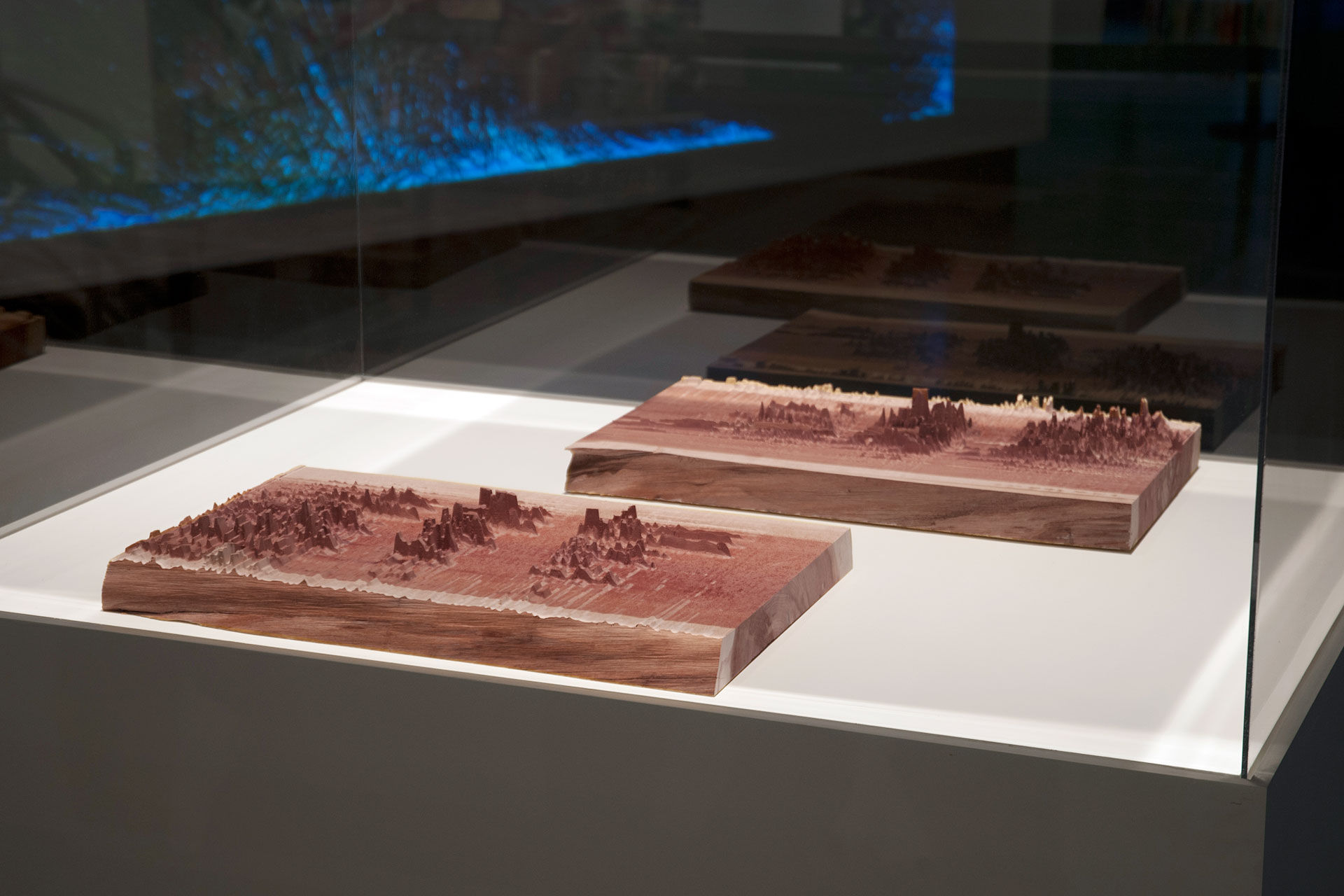
Installation View at SECCA; [Photography: Cliff Dossel]

2 sculptures, 50 × 25 × 12 cm each; Cedar wood; [Photography: Cliff Dossel]

Detail; [Photography: A N F]
More Projects
KT I – Ile des Embiez is a site-specific video created on the island in the south of france of the same name. KT I is an attempt of recreating the memory of the island through an artificial landscape composed of macro photos of found textures.
Sound is by Von Sallwitz Sound Architecture.



More Projects

Generative Software Process; 2012; Dimensions variable;
The software uses a swarm of particles to gradually create an abstract composition based on the color and composition of a series of photographs. The drawing agents behave according to a set of rules, but have a degree of autonomy.
When the software is being run it produces an infinite sequence of unique images over time.
![]()
![]()
![]()
![]()
More Projects
![]()
C-print 80 × 55 cm;
![]()
Detail
More Projects
![]()
Engineered Viral Strain I; 75 × 50 cm; Lambda-print
![]()
Engineered Viral Strain I; Detail
![]()
Engineered Viral Strain II; 75 × 50 cm; Lambda-print
![]()
Engineered Viral Strain III; 75 × 50 cm; Lambda-print
More Projects
Generative Software Process; 2012; Dimensions variable; Excerpt of 1:25
The software uses a swarm of particles to gradually create an abstract composition based on the color and composition of a series of photographs. The drawing agents behave according to a set of rules, but have a degree of autonomy.
When the software is being run it produces an infinite sequence of unique images over time.
![]()
Installation View at Rua Red Dublin
More Projects
![]()
2 panels 90 × 40 cm each; OSB, car paint, deterministic randomness
![]()
More Projects

45 × 45 × 8 cm; MDF, car paint, deterministic randomness
More Projects

95 × 135 cm; MDF, car paint, deterministic randomness

More Projects
A landscape in constant flux. Wind, mountains, mist.
Patterns emerge. Floating, flying. Hissing, rustling, sweeping.
Sound РJos̩ G. Soler
2011; digital video, 1080p; 8 minutes 22 seconds;
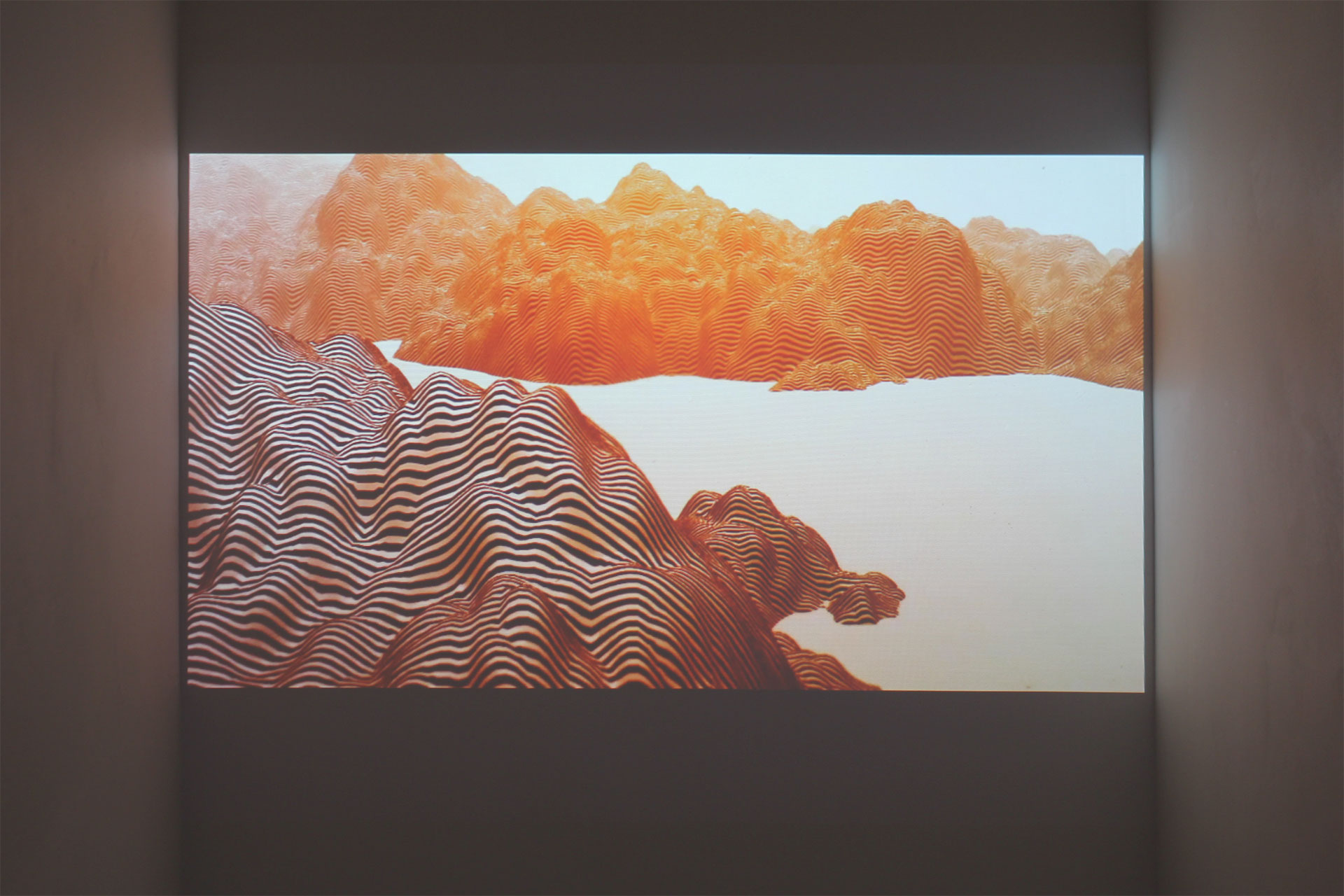
Installation view at 22.48m2 Paris
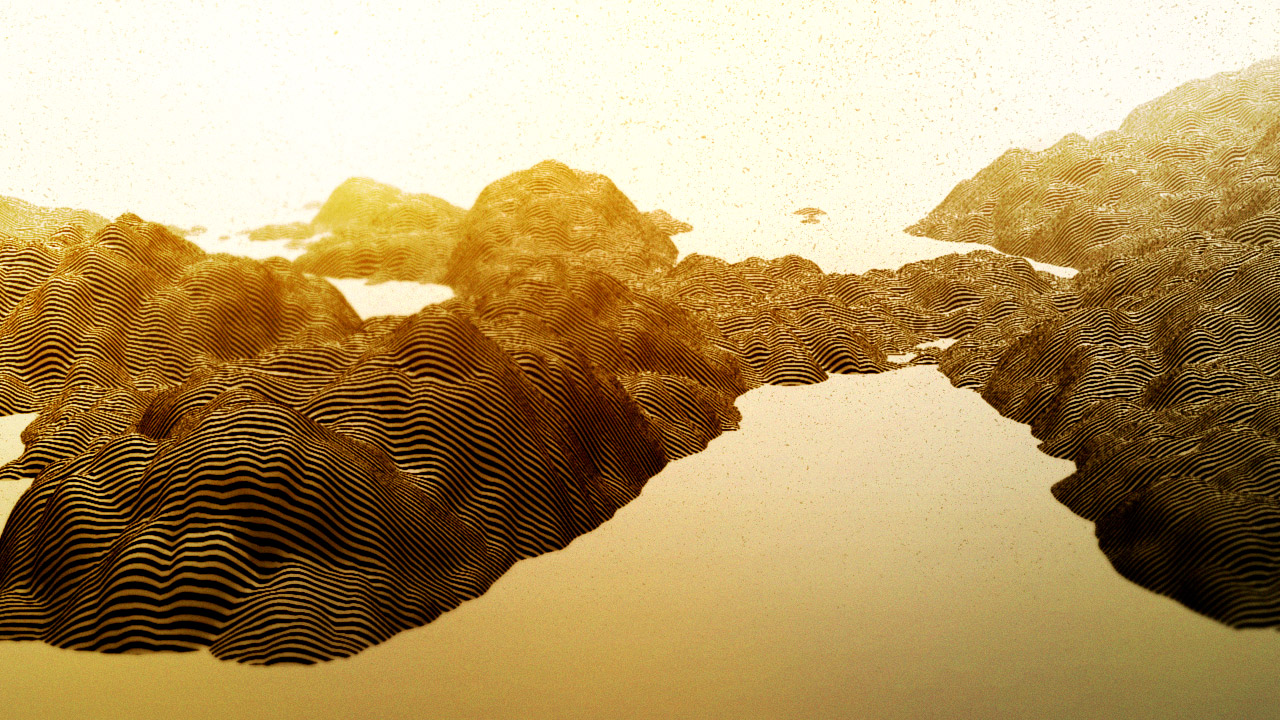



More Projects
More Projects

Exhibition view at GIM Bremen

KM-17656 – Procedural drawing; 75 × 50 cm; C-print on aluminum dibond

KM-10427 – Procedural drawing; 75 × 50 cm; C-print on aluminum dibond

KM-10427 – Procedural drawing; 75 × 50 cm; C-print on aluminum dibond
More Projects

Series of 3 generative drawings; 80 × 120 cm; Lambda print on alu dibond;





Detail LZ 123649;

Detail LZ 123649;

Detail LZ 123649;

More Projects

The other artists participating in the show are Shajay Booshan, Leander Herzog, Daniel Widrig and Marius Watz.



More Projects

Poplar plywood; 80 × 140 × 35 cm;
3 Days in the Life is a visualisation of telecommunications data. The data sculpture represents my movement and communication made with my cell phone during 3 days. For more information on the process, refer to A Week in the Life.

More Projects

Cardboard, custom software; 120 × 80 × 20cm;
A Week in the Life was shown in the DAM Gallery Berlin from 08/02/05 – 08/03/08 as a part of Generator.X – Beyond the Screen Exhibition and at the Toshare Festival in Torino at the Manufacturing exhibition, which was curated by Bruce Sterling.



More Projects

Der Wandel in Zahlen is an extension of an existing thermometer in the city space with an additional display, which calculates and shows the difference to saved statistical weather data of the past. With this project I want to raise the public awareness of anthropogenic global warming. In this case, the display calculated the difference of the month february 2007 from the same month 50 years ago.

A Temperature sensor is connected to a microcontroller. The current temperature values are compared with stored statisctical data of the past and the difference is calculated. This value is then shown on an Led-display attached to the thermometer.

current temperature − reference temperature = displayed value






